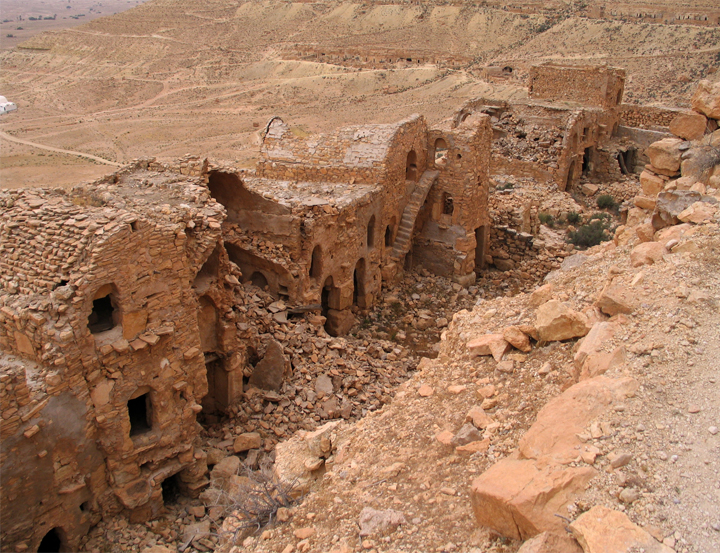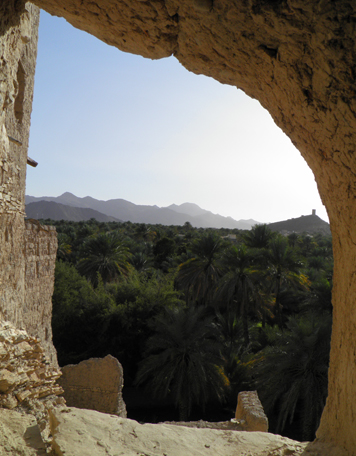Re-Cycling Discarded Oasis Landscapes
Convenor:
Dr Giamila Quattrone
Nottingham Trent University
A study of the interconnections and synergies between topographic conditions and urban morphologies, building types and socio-cultural/religious norms, locally available resources, workmanship and construction which have traditionally concurred to shape Islamic oasis environments started at Università degli Studi Mediterranea di Reggio Calabria as part of Projet Etude, Sauvegarde et Valorisation Des Villes Oasis en Tunisie with a focus on the Southern-Tunisian settlement of Nefta.
This line of enquiry has since broadened to encompass a number of heritage oasis settlements in Central Oman that, similarly to Nefta, have been deserted following the country's post-1970 economic boom and, where still inhabited, have undergone insensitive alteration to the detriment of their urban and architectural cohesiveness.

Chenini, Tataouine, Tunisia. Photo: Giamila Quattrone, 2007
Adopting a cross-disciplinary approach with incursions into architectural anthropology, landscape anthropology and architectural technology this investigation builds on the understanding of the dynamics underlying the formation, transformation and desertion of Islamic oasis landscapes with the aim of outlining strategies and methods towards their sustainable reactivation.
Operating within the theoretical territory of the 3Rs - Reduce/Reuse/Recycle - underlying principles and methods are transferred to heritage management and development in order to propose socially, culturally and economically sound regeneration programs while ensuring sustainable management of heritage assets. The aim is to respond to the design challenges posed by the sustainable growth of traditional yet resilient societies under the pressure of sweeping physical and cultural change by methodologically delineating possible 're-cycling geographies' for 21st century rejected landscapes.
This is envisaged through the reuse of existing structures through the introduction of apparently incongruent programmes, the recourse to contemporary spatial and formal tactics as well as technological tools, the recycling of materials and the reduction of waste.
 |  |  |
|---|
Douiret, Tataouine, Tunisia.
Photo: Giamila Quattrone, 2008 | Barkat al-Mawz , Oman.
Photo: ArCHIAM, 2011 | Tozeur, Tunisia.
Photo: Giamila Quattrone, 2008 |
Key areas of interest
- Islamic traditional oasis settlements
- Continuity and change in vernacular built environments
- Building reuse and material recycling